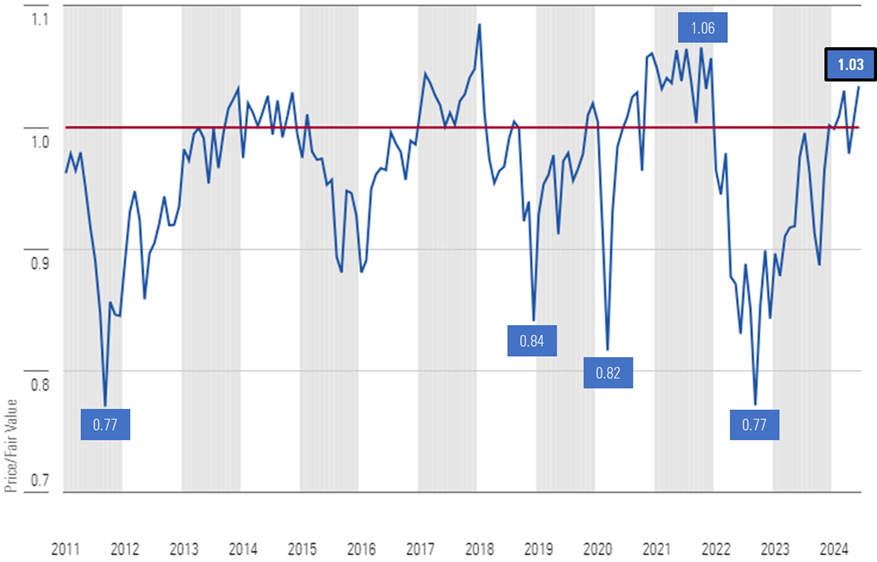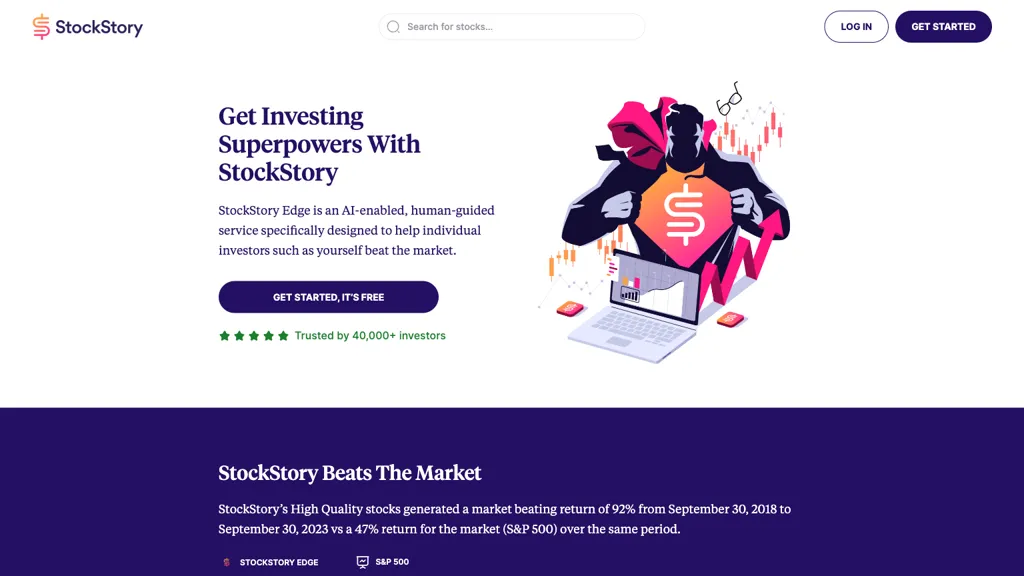20 Great Advice To Deciding On AI Stock Picker Platform Sites
20 Great Advice To Deciding On AI Stock Picker Platform Sites
Blog Article
Top 10 Tips On Assessing The Market Coverage Of Ai Platform For Predicting And Analyzing Stocks
The coverage of markets on the trading platforms for AI stock prediction/analysis is critical as it determines the types of assets and markets you can access. Platforms with extensive market coverage let you diversify your portfolio and explore opportunities across the globe and can also be adapted to a variety of trading strategies. Here are 10 best suggestions to help you analyze the market coverage provided by these platforms.
1. Evaluate Supported Asset Classes
Stocks - Make sure the platform is able to provide coverage of the major stock markets (e.g. NYSE NASDAQ LSE HKEX), and also includes mid-caps, small-caps, and large-caps.
ETFs: Make sure that the platform offers a variety of ETFs to offer diversified exposure across different categories, themes and countries.
Futures and options: Check whether the platform supports derivatives like options, futures and other leveraged instruments.
Forex and commodities. Find out whether there are any forex pairs that are available, in addition to precious metals, commodities for energy, and agricultural commodities.
Cryptocurrencies: Check to see whether your platform is compatible with major cryptocurrencies like Bitcoin, Ethereum and altcoins.
2. Make sure you check the area of coverage
Global markets: Make sure that the platform includes major global markets such as North America, Europe and Asia-Pacific.
Regional focus: Check whether your platform has a particular area of focus or market that aligns to your trading needs.
Local exchanges: Check whether your platform is compatible with regional and local exchanges relevant to your business or your strategy.
3. Comparing Real-Time Data to Delayed Data Delayed Data
Real-time Data: Be sure that your platform is equipped with real-time data for trading and also for making quick decisions.
Delayed Data: Find out whether the data that is delayed can be obtained for free or at the cost of. They could be enough for long term investors.
Latency of data. Examine whether the platform minimizes delays for real-time information feeds, especially in the case of high-frequency trading.
4. Review the Historical Data available
In depth of Historical Data: Make sure the platform has a large amount of historical data that can be used for backtesting as well as analysis and testing (e.g. 10plus years).
Check for granularity. Historical data may include daily, intraday and weekly granularity.
Corporate actions - Check previous data to confirm that it reflects stock splits or dividends, as well as other corporate activities.
5. Review market depth and order data
Level 2 data: Make sure the platform provides Level 2 data (order book depth) for improved price search and execution.
Check for real-time bidding and spreads of asking. This will guarantee that the price is correct.
Volume data: Make sure the platform has detailed data regarding volume that can be used to analyse market and liquidity activities.
6. Review the coverage of Indices and Sectors
Major indices - Ensure the platform is compatible with major indices such as S&P 500 and FTSE 100 to benchmark.
Sector-specific data for focused analysis, determine if the platform has data from specific industries (e.g. technology, health care technology).
Custom indices. Make sure the platform can track or create custom indices that meet your needs.
7. Evaluate Integration with Sentiment Data and News
Feeds for news: Make sure the platform is able to provide real-time feeds of news and information from credible sources, like Bloomberg and Reuters, for market-moving event.
Check the sentiment analysis tool on the platform based on information from news, social media or other sources.
Event-driven strategy: Check that the platform supports event driven trading strategies (e.g. announcements of earnings, economic reports).
8. Verify Multi-Market Trading Capability
Cross-market trade: Make sure the platform permits trading across different markets and asset categories from a common interface.
Conversion of currency: Make sure your platform supports multi-currency trading and automatic currency conversion.
Support for various time zones It is important to ensure that your platform is able to trade on global markets in different time zones.
9. Examine Alternative Data Sources
Find alternative sources of data.
ESG data: Determine whether the platform offers environmental governance, social and (ESG) information to help investors make socially responsible decisions.
Macroeconomic data: Check that the platform provides macroeconomic indicators to conduct fundamental analysis (e.g. GDP rate, inflation rates, interest rates).
10. Review User Feedback and Market Reputation
User reviews: Look for reviews from users to gain a better understanding of the platform.
The reputation of the company: Find out whether the platform has been acknowledged by experts in the industry in terms of market coverage.
Case studies: Look for case studies or testimonials that highlight the platform's success in particular markets or asset classes.
Bonus Tips
Trial period: You can try a demo, trial or a free trial to test the coverage of markets and the data quality.
API access: Check if the platform's API permits access to market data in a programmatic manner for customised analysis.
Support for customers: Ensure that the platform provides support for queries related to data or markets.
By using these tips, it is possible to precisely assess the coverage of an AI software for stock prediction and analyzing trading platforms. You can then choose an investment platform that provides you the market and the information you need to make successful trades. A broad market coverage will allow you to diversify and expand the possibilities of your portfolio. It also assists you adapt to changes in market conditions. Follow the top best ai trading app for website info including ai stock picker, ai investing, ai for investment, ai stock trading bot free, ai stock, investing ai, ai investing, ai stock trading, investment ai, chart ai trading assistant and more.
Top 10 Tips For Evaluating The Transparency Of Ai Stock Predicting/Analyzing Trading Platforms
Transparency can be an important factor when it comes to the evaluation of AI trading and stock prediction platforms. Transparency lets users verify predictions, trust the platform and understand how it works. Here are the top 10 tips to determine the level of transparency that these platforms offer.
1. The AI Models Explained in Clear Terms
Tip: Verify that the platform explains clearly the AI models and algorithms that are used to make predictions.
What's the reason? Users can better assess the reliability and limitations of a technology by understanding its underlying technology.
2. Sources of Disclosure for Data
Tips: Ensure that the platform is transparent about the sources of data it relies on.
What: By knowing the sources of information, you can ensure that the platform is using accurate and complete data sources.
3. Performance Metrics Results and Backtesting
TIP: Always look for transparent reporting on performance metrics, such as accuracy rates and ROI, in addition to the results of backtesting.
Why: Users can verify the efficiency of an application by examining the past performance of it.
4. Notifications and updates in real-time
Tips. Find out if your platform can provide real-time information and notifications regarding trades or modifications to the system, such as trading forecasts.
What is the reason? Real-time transparency means users are always aware of critical actions.
5. Limitations The Open Communication
Tip - Check to see if the platform is open regarding the risks that come with its prediction and trading strategies.
Why? Acknowledging limitations helps build confidence and lets users make informed choices.
6. Raw Data Access for Users
Tip: Check if users have access to raw data or intermediate results utilized by AI models.
Why: Users can perform their own analysis with raw data, and then validate their predictions.
7. Transparency in Fees and Charges
Tips: Ensure that all fees, subscription charges, and other hidden costs are clearly listed on the platform.
The reason: Transparent pricing avoids unexpected costs and builds trust.
8. Regular reporting and audits
TIP: Find out if the platform regularly releases reports or undergoes audits from third parties to confirm its operations and performance.
Independent verification is essential because it adds credibility to the process and ensures accountability.
9. The ability to explain predictions
Tips: Check if the platform provides information on how specific predictions or recommendations are generated (e.g., feature importance, decision trees).
The reason: Explainability helps users to better understand AI decisions.
10. Customer Feedback and Support Channels
Tips. Find out if there are any channels that can be used for feedback from users, customer support and transparency in response to users' concerns.
Reason: Responsive Communication shows an commitment to transparency, and customer satisfaction.
Bonus Tip: Regulatory Compliance
Check that the platform conforms to the relevant financial regulations and declares its conformity status. This provides an extra layer of transparency.
If you take the time to carefully examine these factors, it is possible to evaluate whether an AI-based stock prediction or trading system operates transparently. This allows you to make informed choices and gain confidence in the capabilities of AI. Have a look at the top inciteai.com AI stock app for more tips including ai stock price prediction, investing with ai, ai stock price prediction, ai stock predictions, free ai tool for stock market india, best ai for stock trading, ai investment tools, ai stock investing, stock trading ai, ai stock predictions and more.